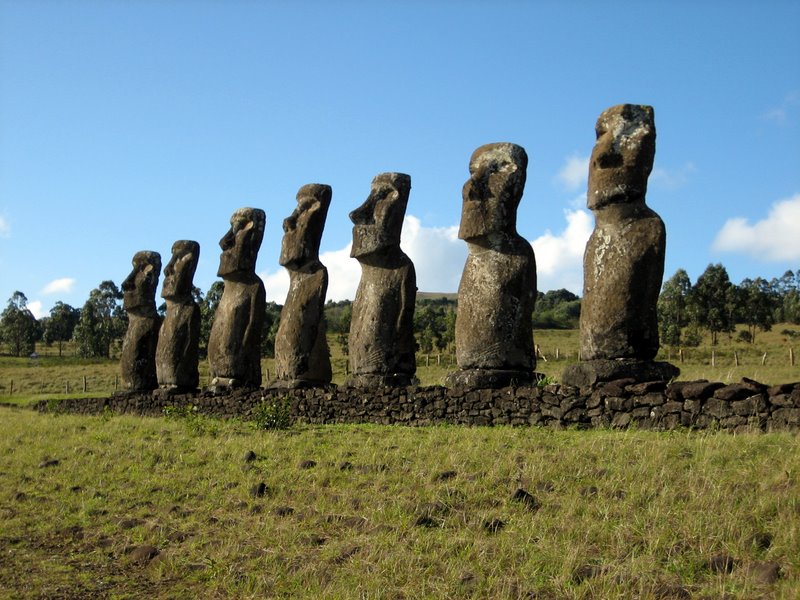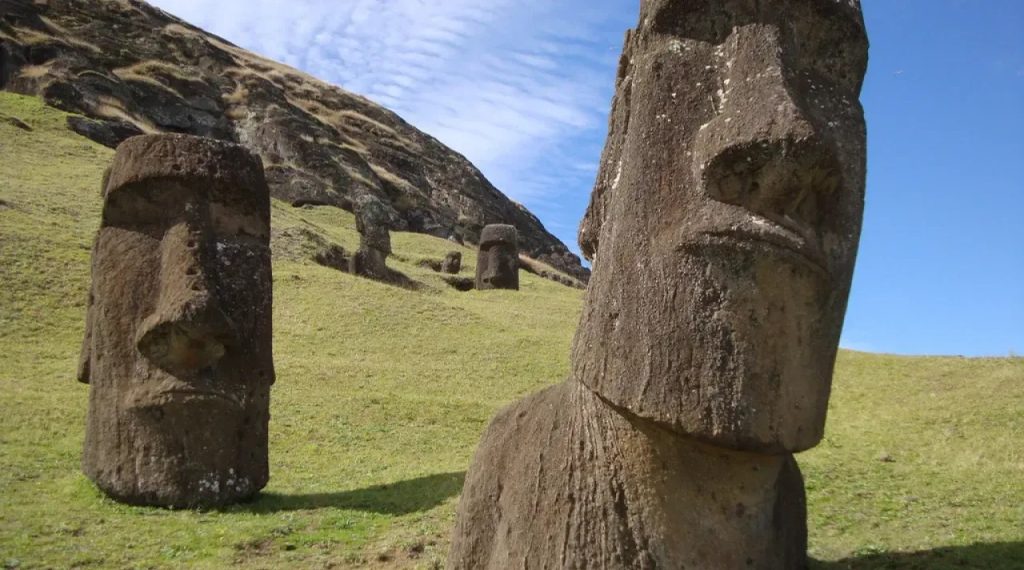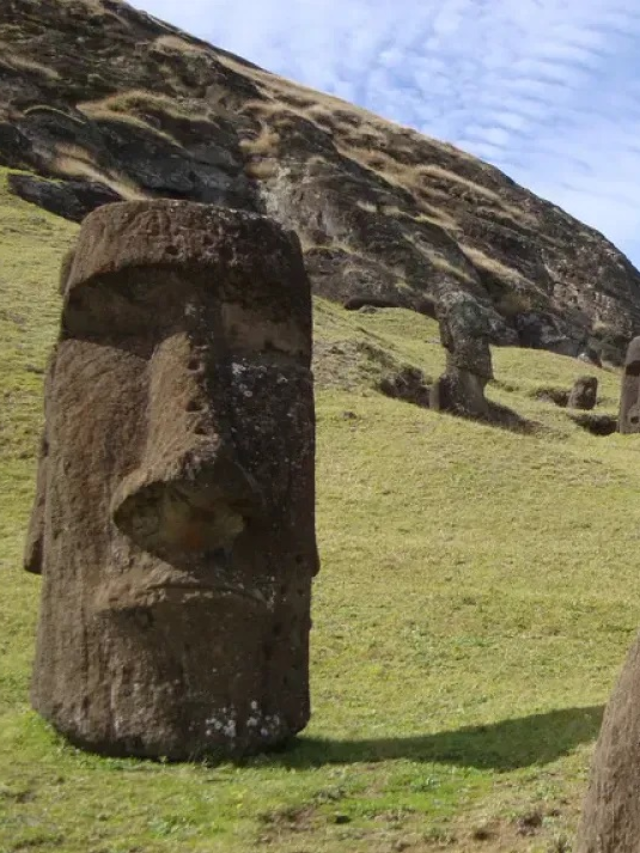The Moai statues are iconic and massive stone sculptures on Easter Island, a remote island in the southeastern Pacific Ocean. The Moai is one of the world’s most remarkable and well-known monolithic monuments. The indigenous Rapa Nui people created these figures, which are recognised as one of the most significant archaeological mysteries in the world. Numerous damaged and fallen monuments across the island have since been restored due to extensive research on these well-known statues.
Tuff, or compressed volcanic ash, created the Moai figurines. These statues were made by the Rapa Nui people, who saw mystical power in them and used them to represent their ancestors. Nearly a thousand enormous statues, known as moai, were carved out of volcanic bedrock by the ancient Polynesians of Easter Island. About 500 were moved to monumental places around the island, some up to 16–18 kilometres away, over routes that cut through rough terrain. The biggest of these monuments was transported more than 5 kilometres, is more than 10 metres tall, and weighs over 74 metric tonnes. The assumption made by early European explorers and subsequent scholars was that the transportation and carving of moai required a sizable labour force, a sizable population, and a significant investment of natural resources, such as agricultural surplus and trees for rollers or other transport devices.
The statues were carved from a quarry at Rano Raraku, the main quarry on Easter Island. The statues vary in size, with the largest reaching up to 33 feet (10 meters) in height and weighing several tons. Most statues were carved between 1100 and 1680 CE.
How the Rapa Nui people moved these enormous sculptures from the quarry to different parts of the island is one of the great mysteries surrounding the Moai statues. The most widely accepted explanation states that ropes, wooden sledges, and sledges were used to move the statues. Traditionally, the Moai statues were placed on ceremonial platforms known as ahu. These raised areas, which offered views of the neighbourhood in all directions, were frequently found near the coast. The figures were positioned on the ahu with their backs to the ocean.
The Moai statues were no longer being built or transported at some point in Easter Island’s past. Many statues were knocked over due to internal strife or resource exhaustion. European encounters in the eighteenth century further upended the Rapa Nui society. Some fallen Moai statues are being restored and reerected in the present era. These restoration initiatives seek to protect the Rapa Nui people’s cultural legacy and offer historical context for the island.
Mystery of Moai statues

Researchers and archaeologists are fascinated by the mysteries surrounding the Moai statues on Easter Island. The fascination with these mysterious sculptures is heightened because some mysteries remain even though many facets of the Moai and the Rapa Nui civilizations have been researched and documented. How the Rapa Nui people moved these enormous stone statues from the Rano Raraku quarry to their ultimate positions throughout the island is one of the most puzzling features of the Moai statues. Despite their vast size and tons of weight, the statues were transported long distances. It is still necessary to gain a complete understanding of the engineering involved and the precise transportation strategies.
Although it is commonly accepted that the Rapa Nui people used the Moai statues to symbolise their ancestors and had spiritual value, their precise function and meaning still need to be discovered. The significance of the statues is left up to the scholars’ interpretation based on oral traditions and archaeological data because the Rapa Nui society left no written records behind. This only serves to deepen the enigma. The building and shipping of the Moai statues may have exacerbated Easter Island’s deforestation and environmental deterioration. According to theories, the Rapa Nui people moved and carved the statues using many of the island’s resources, which may have caused the island’s environment to collapse. Research and discussion on the sculptures’ connection to environmental sustainability are still underway.
A case of social collapse has been made of Easter Island, where the Rapa Nui society is said to have declined because of internal strife, overcrowding, and resource depletion. Several ideas explain the series of events that ultimately brought about the demise of the Rapa Nui people; the relationship between the Moai sculptures’ construction and movement and the society’s decline is not entirely clear. Many Moai statues had been discovered toppled and dispersed on the island. Although the exact cause of their downfall is unknown, hypotheses include everything from natural calamities to internal strife within the Rapa Nui community. Investigations into how and why the statues were toppled are still ongoing.







